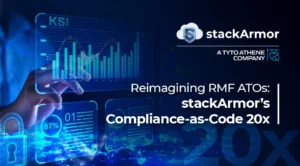As you’ll recall from our last post, FedRAMP just soared to a major milestone – 300 FedRAMP Authorized Cloud Service Offerings (CSOs). Beyond marking a noteworthy tally, this is a monumental achievement because it means that federal agencies now have reused these cloud services over 4,500 times! In the days and months to come, agencies will have access to even more CSOs than ever before, which comes with a few trickle down effects.
The Benefits of More CSOs
For one, more CSOs translates to more options for federal agencies. In turn, the team at FedRAMP points out that this makes the market more competitive and paves the way for lower pricing (a challenge that we also highlighted in our previous post). Plus, this record figure catapults FedRAMP further into its trajectory of growth.
Growth has been a key trend for FedRAMP, especially over the past two years. Within that time frame, the number of “In Process” CSOs has increased by 50%. Basically, FedRAMP is on its way to significantly surpass 300. On top of that, the program concludes that it has experienced a 50% increase in the number of CSOs authorized at the High impact level. As FedRAMP explains at their blog, “These CSOs are authorized to store the federal government’s most sensitive, unclassified data where the loss of confidentiality, integrity, or availability could be expected to have a severe or catastrophic adverse effect to an organization.”
The escalation in CSOs – and High impact level CSOs specifically – is something that stackArmor saw trending back in 2022. During a webinar that we co-hosted with Carahsoft on understanding the requirements for FedRAMP High accredited environment, we provided a snapshot of the growing figure. As CEO and Founder of stackArmor, Gaurav “GP” Pal, stated in the presentation, “There is an increasing interest as the FedRAMP market matures.”
The Growing Need for CSOs
That increasing interest and maturation makes even more sense when you consider the government’s mass movement toward enhanced technology. Take the Technology Modernization Fund (TMF) for example. The TMF was established to distribute loans to federal agencies wanting to invest in upgraded tech. In 2022, the fund received a $1 billion boost from the American Rescue Plan Act.
That pursuit of technical advancement has directly coincided with cloud migration – a trend that has swept not just the federal government and agencies, but state and local governments as well. As Chris Teale at GCN reports, “With applications now offered as cloud-only services, many local government IT executives said they felt they had little choice but to move to the cloud.” The CompTIA Public Technology Institute’s (PTI) State of City and County IT National Survey found that 46% of organizations have infrastructure to a private cloud, followed by a slightly smaller percentage to a public cloud.
According to another survey also reported on by GCN, 88% of CIOs said they have increased their cloud adoption. Basically, transitioning to cloud technology is becoming an essential measure. But, that also means that upholding security is just as much of an essential measure, which brings us back to the increase in CSOs authorized at the High impact level.
Cybersecurity will continue to be a heavy concern for federal agencies, particularly. Therefore, the demand for High impact level is only going to become more prevalent. If you are already a FedRAMP Moderate participating in this growing industry and want to climb that ladder up to High, make sure to watch our webinar mentioned above, “FedRAMP Moderate to High Accelerator for ISVs.”
Sources:
- “FedRAMP Authorizations Hit 300 Milestone” – FedRAMP, FedRAMP Blog
https://www.fedramp.gov/2023-04-26-fedramp-authorizations-hit-300/ - “FCW Insider Chat: Cyber and Tech Policy” – Natalie Alms and Chris Riotta, FCW
https://fcw.com/it-modernization/2023/05/fcw-insider-chat-cyber-and-tech-policy/386075/ - “Local leaders feel cloud migration pressure, survey says” – Chris Teale, GCN
https://gcn.com/cloud-infrastructure/2023/05/local-leaders-feel-cloud-migration-pressure-survey-says/386081/ - “Cloud adoption gains traction in states” – Chris Teale, GCN
https://gcn.com/cloud-infrastructure/2023/05/cloud-adoption-gains-traction-states/385934/




